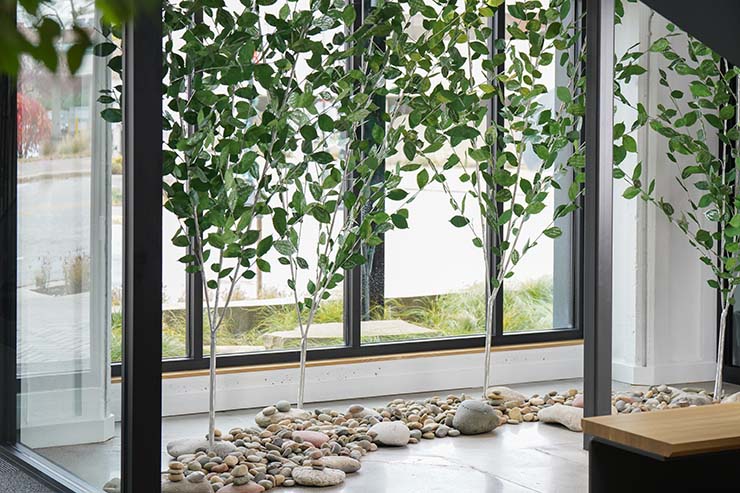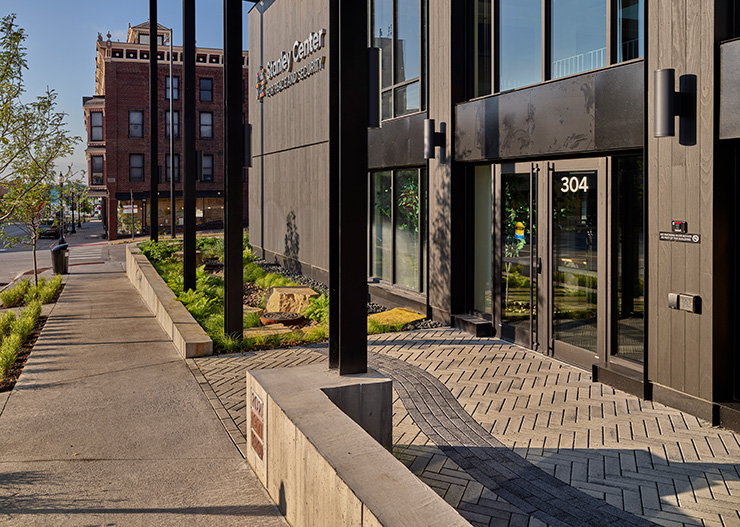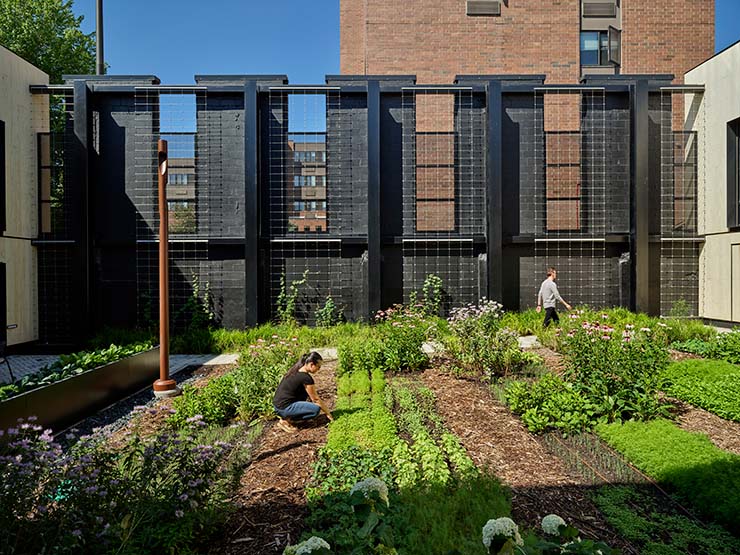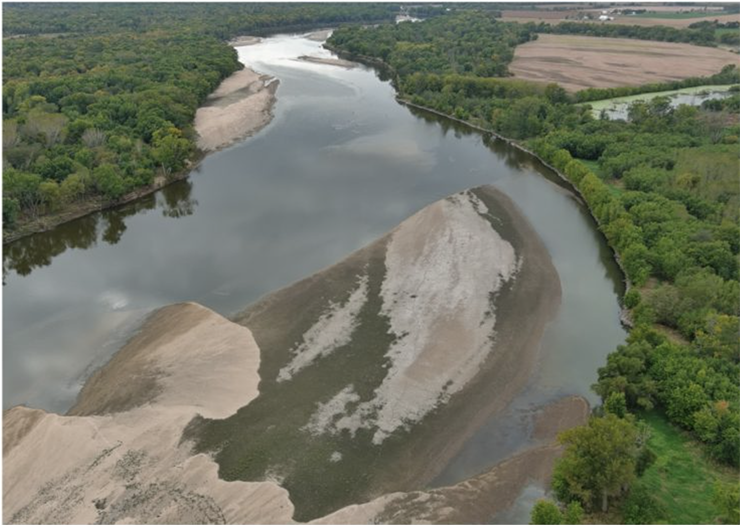LBC Petal – Place
According to the Living Building Challenge, the Place Petal seeks to realign how people understand and relate to the natural environment. The Place Petal challenges project teams to understand their site, its history and ecology, and the cultural and social issues impacting the surrounding community.

CREDIT: Josh Ford
The Stanley Center is based in Muscatine, Iowa, and we felt it was necessary to incorporate the history of our location into our home. It is important to acknowledge that we are not the original inhabitants of this land–it was first home to the Kickapoo, Sauk, Meskwaki, and Oglala Sioux. We collaborated with artists Deana Dartt and Nancy Judd to create a Tree of Accountability that’s on display in our front window to bring awareness to the colonial history and ongoing injustices faced by Native people.
C. Maxwell Stanley, an engineer and businessperson who co-founded the Stanley Center in 1956, had an early interest in sustainable building design. Taking on the Living Building Challenge for our new home was a natural fit with the values of the Stanley Center.
Situated behind the Stanley Center is the historic Alexander Clark House. Alexander Clark and his daughter, Susan, were instrumental in desegregating Iowa schools in 1868. We are currently working on two books with authors, Joshalynn Hickey-Johnson and Rachelle Chase, to foster awareness of Susan Clark’s story. This effort is part of our Global Education Program, a continuation of our commitment to education in our local Iowa community that was initiated by center co-founder Betty Stanley.
Prior to our renovating 304 Iowa Avenue, the building was the former home of the Musser Public Library, first created by Peter M. Musser in 1901. With a focus on global education, it was in alignment for us to renovate a building previously used for learning. Remnants from the Musser Library can be found outside of our building, where there are three datestones with a time capsule to which we contributed. Near the datestones is a paver pattern representing the river that once flowed across the location of the building with a bioretention site underneath it to collect the overflow from the cisterns. A pearl button backsplash in the kitchen references Muscatine’s history of manufacturing pearl buttons.

CREDIT: Cameron Campbell, Integrated Studios
The Place Petal also promotes urban agriculture. Fresh produce grows on 5% of our building site. The produce selected is tailored to the needs of the Muscatine Center for Social Action (MCSA), our neighbors, where most of the vegetables and herbs are donated. We will have salad greens year-round provided by our lettuce walls, but herbs, carrots, sweet potatoes, and alliums will be harvested in the fall. Our landscaped areas grow 100% native Iowan plants.

CREDIT: Cameron Campbell, Integrated Studios
As part of the Human-Scaled Living piece of the Place Petal, weatherproof bike racks, showers, and lockers are included in our building design. To decrease fossil fuel usage, many of us carpool to work, and we have incorporated a regular survey to track potential changes in our carbon footprint over time.

CREDIT: Bur Oak Land Trust
For the Habitat Exchange portion of the Place Petal, we are making a donation to the Bur Oak Land Trust to preserve at least one acre of land in Muscatine County. The land that will be acquired is going to be adjacent to the 198-acre Corriell Nature Preserve in Muscatine County, IA.
Learn more from Neumann Monson Architects about how we incorporated elements of the Place Petal into the design of the Stanley Center’s new home.
